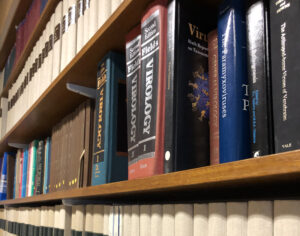Transcription regulation
in the malaria parasite

Publications
Kelly B. A., Neil S. J., McKnight A., Santos J. M., Sinnis P., Jack E. R., Middleton D. A. and Dobson C. B. (2007) Apolipoprotein E-derived anti-microbial peptide analogues with altered membrane affinity and increased potency and breadth of activity. FEBS J 274, 4511-25
Friedrich N., Santos J. M., Liu Y., Palma A. S., Leon E., Saouros S., Kiso M., Blackman M. J., Matthews S., Feizi T., Soldati-Favre D. (2009) Members of a novel protein family containing MAR domains act as sialic acid-binding lectins during host cell invasion by apicomplexan parasites. J Biol Chem 285, 2064-76
Santos J. M.*, Sheiner L., Klages N., Jemmely N., Friedrich N., Soldati-Favre D. (2010) Toxoplasma transmembrane microneme proteins and their modular design. Mol Microbiol. 77, 912-29
Santos J. M., Ferguson D. J., Blackman M. J., Soldati-Favre D. (2011) Intramembrane cleavage of AMA1 switches Toxoplasma from an invasive to a replicative mode. Science 331, 473-7
Cabrera A., Herrmann S., Warszta D., Santos J. M., Peter A. J., Kono M., Debrouver S., Jacobs T., Spielmann T., Ungermann C., Soldati-Favre D., Gilberger T. W. (2012) Dissection of minimal sequence requirements for rhoptry membrane targeting in the malaria parasite. Traffic 13, 1335-50
Mueller C., Klages N., Jacot D., Santos J. M., Cabrera A., Gilberger T. W., Dubremetz J. F., Soldati D. (2013) The Toxoplasma Protein ARO Mediates the Apical Positioning of Rhoptry Organelles, a Prerequisite for Host Cell Invasion. Cell Host & Microbe 13, 289-301
Cobbold S. A., Santos J. M., Ochoa A., Perlman D. H., Llinás M. (2016) Proteome-wide analysis reveals widespread lysine acetylation regulating major protein complexes and the family of ApiAP2 DNA-binding proteins in the malaria parasite. Sci Rep 6, 19722
Santos J. M., Josling G., Ross P., Joshi P., Orchard L, Campbell T., Schieler A., Cristea I. M., Llinás M. (2017) Red Blood Cell Invasion by the Malaria Parasite is Coordinated by the PfAP2-I Transcription Factor. Cell Host & Microbe 21, 731-41
Santos J. M., Braikia F-Z., Oudinet C., Dauba A., Conte C., Khamlichi A.A. (2018) Duplication of a germline promoter downstream of the IgH 3’RR enhancer impairs class switch recombination. Sci Rep 8, 9164
Oudinet C., Braikia F-Z., Dauba A., Santos J. M., Khamlichi A.A. (2019) Developmental regulation of DNA cytosine methylation at the immunoglobulin heavy chain constant locus. PLOS Genetics 15: e1007930
Santos J. M., Braikia F-Z., Oudinet C., Dauba A., Khamlichi A.A. (2019) Two modes of cis-activation of switch transcription by the IgH superenhancer. PNAS 116: 201902250
Santos J. M., Schöne L., Oudinet C., Dauba A., Khamlichi A.A. (2019) Essential role of the initial activation signal in isotype selection upon deletion of a transcriptionally committed promoter. Sci Rep 9
Singh S., Santos J. M., Orchard L, Yamada N., van Biljon R., Painter H., Mahony S., Llinás M. (2020) The PfAP2-G2 transcription factor is a critical regulator of gametocyte formation. Mol Micro
